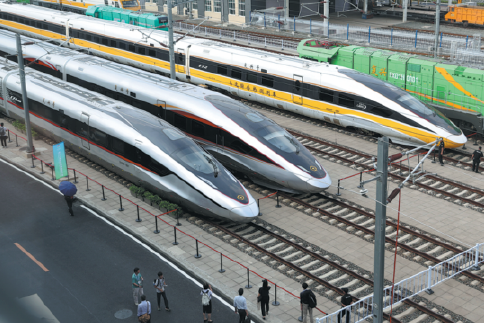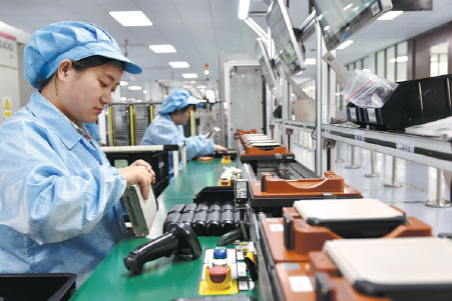New pattern driver of high-quality development


Compared with them, China's labor costs are much higher. As early as 2014, China's labor costs were already four times that of Bangladesh, while our labor productivity is not four times that of the South Asian nation. China's labor-intensive products, such as clothes, shoes and hats, have little to no comparative advantages. As a result, cheaper labor costs are no longer the main comparative advantage of China's exports.
A unified domestic market is a source of our core competitiveness, and it is also the core reason why we take the domestic market as the mainstay. Once the market expands, more goods can a company sell to reduce its own fixed costs. Fixed costs remain the same as a company starts production. Therefore, the more goods a company sells, the lower the fixed cost of each product will be, and the higher the profits for the company. Through such an economic structure, the competitiveness of products can be raised, and that is the core competitive advantage of China's exports.
China's exports in the second half will continue to have a relatively good upward momentum, and the trade surplus may reach 2 trillion yuan ($310 billion) in the period to make the full-year trade surplus reach about 3.6 trillion yuan, maintaining the same level as last year.
One reason is that even if the European and US economies recover, they need time to resume production. During that period, they need Chinese products.
Furthermore, exports in the second half will be affected by first-half orders. Orders between China, Europe and the US were signed in the first half, which will keep China's exports in the second half of the year stable.
Statistics showed that trade between China and the European Union has already surpassed trade between China and the US. It is even more interesting that China's trade with the Association of Southeast Asian Nations has surpassed China-EU trade. In other words, China's biggest trading partner now is not the US, nor the EU, but the ASEAN.
That gives us some transparency. First, as Sino-US relations remain complex, Sino-EU relations-especially economic and trade relations-will gradually overshadow Sino-US economic and trade relations.
We can see that the overall investment and trade volume between China and Europe will gradually exceed that between China and the US, especially as the China-EU Comprehensive Agreement on Investment progresses despite some fluctuations in the first half, with some resistance from the European Parliament.
I believe resistance will soon fade, because the EU desperately needs the China market and the CAI is win-win for both participants. From a certain perspective, the EU needs the China market more than China needs the EU's. I think that the CAI may show substantial progress very soon. If we need to specify a time span, it is probably within six months to a year.
Second, we must pay more attention to the development of China-ASEAN relations. We see that ASEAN is now China's largest trading partner. In fact, when we talk about the construction of the 21st Century Maritime Silk Road, one of the most important parts is relations between China and the 10 ASEAN members. Currently, China's investment in ASEAN member countries is several times that of China's investment in the countries in West Asia, let alone in other geographic regions.
Because of this, we should give priority to the Maritime Silk Road cooperation in the next step, since economic and trade cooperation between China and the main countries of the Maritime Silk Road has a historic foundation and can help further enhance bilateral relations.
The Regional Comprehensive Economic Partnership agreement, which was signed late last year, marks closer economic and trade relations between China and the 10 ASEAN countries, and even all the other 14 signatory countries. That means that future economic and trade cooperation between China and the ASEAN will enjoy more healthy, stable and rapid development.
The author is deputy dean and Party secretary of the National School of Development at Peking University.
The views don't necessarily reflect those of China Daily.





































